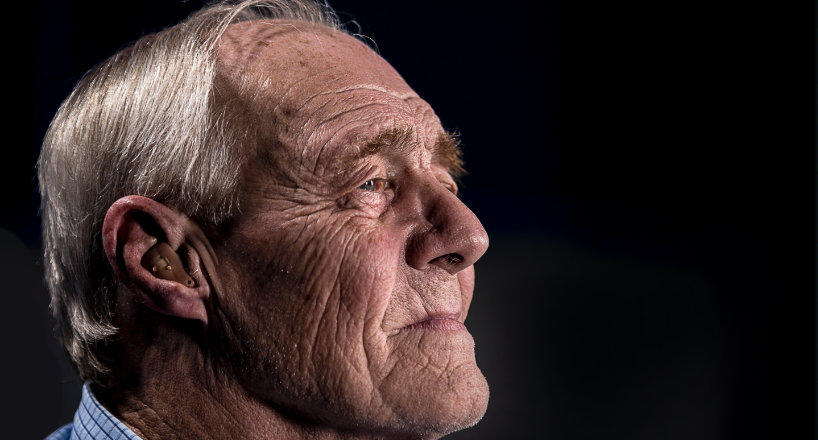
Cataracts are a disease of the eye that leads to the clouding of the eyeball’s lens. Cataracts prevent clear images from appearing on the eye’s retina; triggering moderate, moderate, and even extreme blurred vision.
Usually, an eye disorder related to aging (over half of individuals in America over age 80 have either had a cataract or cataract surgery), cataracts normally occur later on in life as the lens structure within the human eye changes and ages. In addition to age, other risk elements that cause cataracts include smoking cigarettes, UV overexposure, and diabetes.
During the assessment of your eye health, we will thoroughly analyze your lens for signs of cataract development. If a cataract is seen and the clouding is causing visual disturbance, the optometrist will refer you to a relied on and respected cosmetic surgeon for surgical treatment, which is the only recognized treatment for cataracts. Our Eye Care Practice will be there for you offering pre and post-cataract surgery care.
Cataract Surgery
Cataract surgery is the elimination of the natural lens of the eye (also called “crystalline lens”) that has developed an opacification, which is described as a cataract. Metabolic modifications of the crystalline lens fibers over time result in the advancement of the cataract and loss of openness, triggering disability or loss of vision. Throughout cataract surgery, a patient’s cloudy natural lens is removed and changed with an artificial lens to restore the transparency of the lens.
Following surgical elimination of the natural lens, a synthetic intraocular lens implant is placed (eye surgeons state that the lens is “implanted”). Cataract surgery is normally performed by an ophthalmologist (eye cosmetic surgeon) in an ambulatory (instead of inpatient) setting, in a surgical center or health center, using local anesthesia (either topical, peribulbar or retrobulbar), normally triggering little or no pain to the patient. Well over 90% of operations succeed in bring back useful vision, with a low problem rate.
Outpatient care, high volume, minimally intrusive, little cut phacoemulsification with quick post-op recovery has ended up being the requirement of care in cataract surgery all over the world.

Signs & Symptoms
Cataracts don’t all of a sudden develop over night. They usually begin little and only start to significantly impact your vision as they grow. The first sign is normally that your vision becomes blurred, hazy, or cloudy. Furthermore, you may end up being conscious of light, making sunshine, approaching headlights or indoor lighting appear remarkably glaring or brilliant. Colors might seem dim and you may notice halos around lights or double vision.
The symptoms people experience from cataracts may vary. Some individuals even report a temporary enhancement in near vision when a cataract initially develops, a phenomenon referred to as “second sight”.
Here is a list of possible symptoms and signs of developing cataracts:
- Blurry or cloudy vision (that can’t be fixed with a modification in eyeglass prescription)
- Glare from lights, sunshine, oncoming traffic when driving at night, or indoor lighting
- Colors appear dim and less vibrant
- Halos around lights
- Double vision
- Poor night vision
- The unexpected improvement in near vision
If you experience any change in your vision, visit your eye doctor immediately.
Causes of Cataracts
Cataracts belong to the natural aging procedure of the eye and for that reason, if you live to old age, you will likely eventually develop one. While most cases of cataracts establish as part of this process, there are circumstances of genetic cataracts which are present at birth. Further, secondary or traumatic cataracts can happen at any age as an outcome of an eye injury, surgery, or illness. While the danger of establishing a cataract does increase as you age, it is not the only risk aspect. Research study shows that there are ecological, health, and behavioral risk aspects that can likewise contribute to cataract advancement. Many of these risk elements are avoidable and avoidable. These danger aspects consist of:
- Smoking cigarettes and extreme alcohol consumption
- Prolonged direct exposure to ultraviolet (UV) radiation from the sun or other sources
- Obesity
- Diabetes
- Hypertension
- Certain medications such as steroids or statin medications
- History of eye injury or eye surgery
- Family history
Because they are basically a part of the natural aging process of the eye, cataracts can’t necessarily be prevented, however knowing if you have extra risk aspects can help you to take preventative steps to delay the onset of the condition.

Preventing Cataracts
While the advancement of cataracts is largely related to age, there are other aspects that can increase the danger of developing the condition. By understanding these risk elements, there are actions you can take to delay or prevent the advancement of cataracts:
- Sun Protection: Ultraviolet radiation can be a consider the advancement of cataracts. It is advised to safeguard your eyes from ultraviolet sunshine by using 100% UV protective sunglasses and a hat with a brim when you are exposed to the sun.
- Stop Smoking and Limit Alcohol Intake: These habits have actually been shown to increase the opportunities of establishing cataracts, so if you smoke or routinely take in large quantities of alcohol– stop these habits.
- Proper Nutrition: Research reveals that keeping good health and nutrition can also decrease the risk of age-related cataracts, particularly by consuming foods rich with vitamins A (beta-carotene), C, and E and other anti-oxidants found in green leafy vegetables, fruit, and a diet plan abundant in Omega-3s.
- Regular Eye Exams: Once you reach the age of 50, or if you have diabetes or other eye conditions, it is necessary to have a comprehensive eye test every year to check for indications of cataracts and other age-related eye conditions such as age-related macular degeneration or glaucoma. Early detection and treatment for a number of these eye and vision disorders are typically important to conserve your vision.
Intraocular Lenses (IOLs)
During cataract surgery, the Intraocular lens (IOL) replaces the clouded natural lens in your eye to supply the function of focusing light onto the retina. IOLs are generally made of plastic and most of they are monofocal lenses to fix for range vision. With advances in technology, specialized IOLs have been and continue to be established to enhance the ease and success of cataract surgery and to enhance the client’s vision. Now, from multifocal IOLs to IOLs that block UV and blue light radiation, patients have greater options available to them.